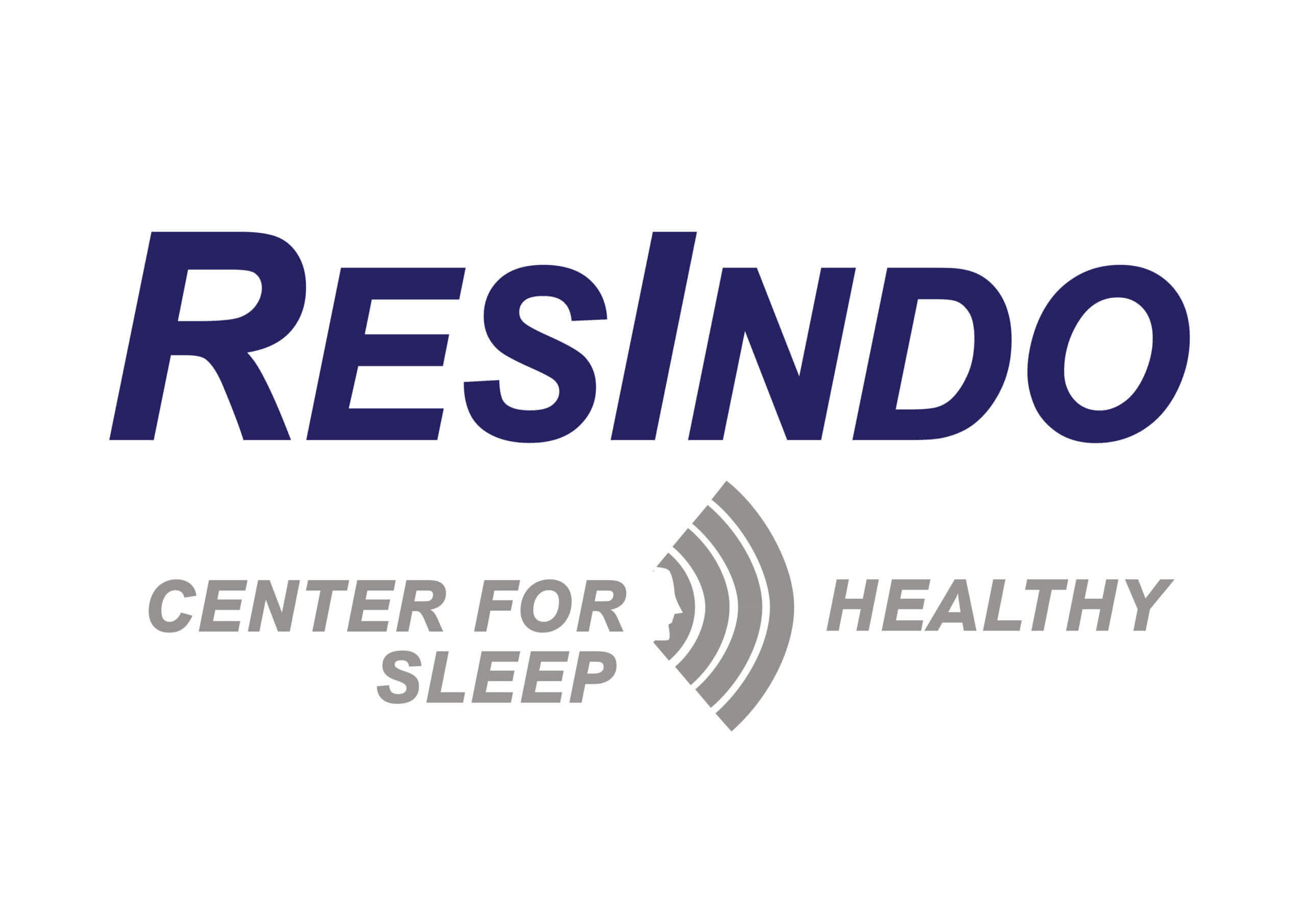Apnea literally means “no breath” or “stopping breathing”. When you have sleep apnea, air stops flowing to your lungs for 10 seconds or longer – that is, you actually stop breathing.
This makes your blood oxygen level drop which in turn triggers your brain to wake you up just enough to take a breath.1 Then you fall back to sleep and the cycle begins again.
This can happen more than 30 times every hour and you may not even know it. As you can imagine, constantly being triggered back into breathing, hour after hour, night after night, can put a strain on your body. The next day you may feel tired and wrung out. Sleep apnea isn’t just an inconvenience. Left undiagnosed and untreated, it can have serious long-term effects on your health.2,3
It’s so common! 3 in 10 men and almost 1 in 5 women have sleep apnea.4
3 types of sleep apnea
- Obstructive sleep apnea (OSA)
- Central sleep apnea
- Mixed sleep apnea
Obstructive sleep apnea is by far the most common type of sleep apnea.5 It happens when your upper airways become blocked or partially blocked when you sleep. The blockage is usually in your nose or throat. Common obstructive sleep apnea causes are:
- Being overweight (due to additional fat around your neck and airway)
- Having inflamed tonsils or adenoids
- Having a blocked nose due to an allergy or cold
- The structure or shape of your nose, neck or jaw.
- Using sleeping tablets or sedatives
- Being a smoker
- Sleeping on your back
Loud snoring, gasping for breath and daytime tiredness are common warning signs of obstructive sleep apnea, although some people with obstructive sleep apnea don’t snore much at all.

Central sleep apnea is more uncommon.5 It happens when your brain doesn’t tell your body to take a breath. Because central sleep apnea doesn’t cause much in the way of snoring, it often goes unnoticed.
If you have a mixture of obstructive sleep apnea and central sleep apnea, then you have mixed sleep apnea.
[/et_pb_text][et_pb_text _builder_version=”4.4.6″ hover_enabled=”0″]Severity of sleep apnea
Is your sleep apnea mild, moderate or severe?6
There are degrees of severity of sleep apnea. Sleep apnea is diagnosed as mild, moderate or severe depending on how many apnea events you have per hour. An event is when there is a complete or partial loss of breath for a minimum of 10 seconds. Complete loss of breath is called an apnea. Partial loss of breath is called a hypopnea. Sleep apnea can be diagnosed by taking a home sleep test.
- Normal sleep:Fewer than 5 events per hour
- Mild sleep apnea:Between 5 and 14 events per hour
- Moderate sleep apnea: 15 to 29 events per hour
- Severe sleep apnea:30 or more events per hour
The result of your sleep test gives you a number called an Apnea/Hypopnea Index (known as AHI). Your AHI number gives you (and your doctor) a guide to the best treatment options for you. Learn more about sleep apnea treatment.
[/et_pb_text][et_pb_text _builder_version=”4.4.6″ hover_enabled=”0″]What causes sleep apnea?
In adults the most common cause of obstructive sleep apnea is obesity. Being overweight can add extra fat around the neck and airways. During sleep the throat and tongue muscles relax causing the airway to become blocked. But obesity is not the only cause – other factors are also associated with sleep apnea. Learn more about what causes sleep apnea.
Central sleep apnea occurs when your brain doesn’t tell your body to take a breath. It’s normally associated with other conditions such as heart failure or stroke.
[/et_pb_text][et_pb_text _builder_version=”4.4.6″ hover_enabled=”0″ custom_padding=”||0px|||” custom_margin=”||-3px|||”]How to prevent sleep apnea
If you have a family member who’s been diagnosed with sleep apnea, you’ll probably be concerned that you might also be at risk, especially if you snore. The risk of you having obstructive sleep apnea is about 50% higher if you have a parent, child or sibling with the condition.8 However, you can reduce your risk of sleep apnea in the future with some lifestyle changes.
- Losing weight (if you’re overweight), being physically active, quitting smoking and reducing your evening intake of alcohol can all reduce your risk of being diagnosed with obstructive sleep apnea.
- If you suffer from insomniaand take sleeping pills it’s worth noting that sleeping pills may contribute to sleep apnea. Talk to your doctor about alternative remedies for insomnia.
- If you snore when you sleep on your back, try and get into the habit of sleeping on your side instead.
What are the warning signs of sleep apnea
Because you’re asleep when it happens, sleep apnea symptoms can go undetected. If you sleep with a partner, you may have been told that you snore, stop breathing or make gasping sounds in your sleep.
Daytime sleep apnea symptoms9,10 include:
- Fatigue, constant tiredness and/or sleepiness
- Poor concentration and forgetfulness
- Morning headaches
- Sexual dysfunction
- Depressed mood
- Weight gain
- High blood pressure
Is sleep apnea related to age or sex?
Men are more likely than women to have obstructive sleep apnea. An Australian study published in 2018 found that 25% of men and 13.3% of women had diagnosed or possible undiagnosed obstructive sleep apnea.11
A woman with obstructive sleep apnea may be less likely to be diagnosed than a man. She may not snore as loudly as a man. She may notice fatigue, insomnia, headaches or mood changes. Her doctor may treat these symptoms rather than recommend a home sleep test for sleep apnea.12
Age is also related to sleep apnea. A man is most likely to be diagnosed with obstructive sleep apnea when he’s aged over 40.11 A woman is more likely to be diagnosed after menopause or during pregnancy.12
Citations
1. Source: Harrington, C. The Complete Guide to a Good Night’s Sleep. Pan MacMillan Australia 2014
2. Source: Wolk R et al. Circulation 2003; 108: 9-12.
3. Source: Buchner NJ et al. Am J Respir Crit Care Med 2007; 176(12): 1274-1280.
4. Source: Peppard PE et al. Am J Epidemiol. 2013 (5.17).
5. Source: Morgenthaler TI et al. Complex sleep apnea syndrome: is it a unique clinical syndrome? Sleep 2006;29(9):1203-9.
6. Source: https://www.webmd.com/sleep-disorders/sleep-apnea/sleep-apnea-ahi-numbers accessed 24 June 2019
7. Source: https://www.mayoclinic.org/diseases-conditions/central-sleep-apnea/symptoms-causes/syc-20352109 accessed 2 July 2019.
8. Source: https://ghr.nlm.nih.gov/condition/obstructive-sleep-apnea#inheritance accessed 2 Aug 2019
9. Source: Palnitkar G, et al. Medicine Today 2012, 13(8):14-23.
10. Source: Wong SH, Ng BY. Singapore Med J. 2015 Jun;56(6):317-23.
11. Source: Appleton SL et al. Sleep Health 4 (2018) 13–19
12. Source: https://www.sleepfoundation.org/articles/women-and-sleep-apnea accessed 2 Aug 2019
[/et_pb_text][/et_pb_column][/et_pb_row][/et_pb_section]